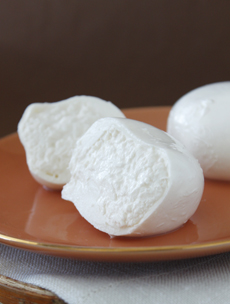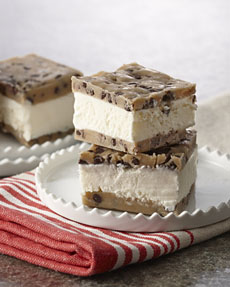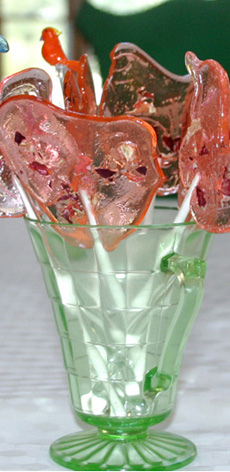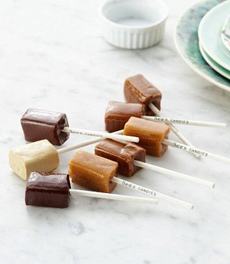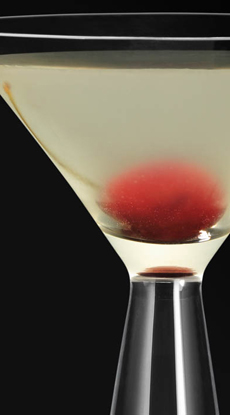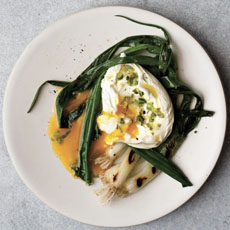
[1] No. 2 Daiquirí of the four recipes below. It’s the first variation of the original, created in 1920s Havana (photo © Bacardi Rum).

[2] A recent take: the Grapefruit Daiquirí, substituting grapefruit juice for the lime (photo © Ruth’s Chris Steak House).
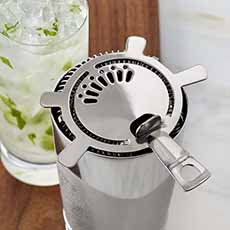
[3] A Hawthorne strainer. This one is from Williams Sonoma.
|
|
July 19th is National Daiquirí Day.
A Daiquirí (pronounced DAK-uh-ree in English, but die-kee-REE in the native Taíno language) is a combination of rum, lime juice, and sugar or another sweetener (we use agave nectar).
It’s well known as one of the favorite drinks of writer Ernest Hemingway, and less well known as a favorite of President John F. Kennedy (Jackie trained the White House staff to make them).
> The original recipes and three popular variations are below.
DAIQUIRÍ HISTORY
The cocktail was invented in 1898 at the El Floridita bar in the tropical heat of the Cuban town of Daiquirí, near Santiago, Cuba, home of an iron mine.
Jennings Cox, an American mining engineer working at the mine, had the bartender shake Bacardi rum, sugar, and lime with ice.
A tall glass (Collins glass) was packed with cracked ice; a teaspoon of sugar was sprinkled over the ice and the juice of one or two limes was squeezed over the sugar. Two or three ounces of white rum were added, and the mixture was stirred with a long-handled spoon. (Later versions used a shaker and other proportions*.)
The group of mining engineers declared it a hit and named it after the town (or was it the mine? There’s also a beach there called Daiquirí).
Word spread and the top bartenders in Havana were shaking it up in no time. It is also possible that William Astor Chanler, Sr., a U.S. congressman who purchased the Santiago Iron Mines in 1902, introduced the Daiquirí to clubs in New York at that time.
In 1909, Rear Admiral Lucius W. Johnson, a U.S. Navy medical officer, introduced the drink to the Army and Navy Club in Washington, D.C. [source].
The Daiquirí is one of the six classic cocktails highlighted in The Fine Art of Mixing Drinks, first published in 1948 and still in print (here’s the 2008 edition). The others included:
Jack Rose (applejack, lemon juice and grenadine)
Manhattan (whiskey, sweet vermouth and Agnostura bitters)
Martini (gin and dry vermouth)
Old Fashioned (whiskey, simple syrup and Angostura bitters, garnished with the lemon peel and a maraschino cherry
Sidecar (Cognac or Armagnac, lemon juice, Cointreau or triple sec)
The Daiquirí is the basis for all Tiki drinks (Mai Tai, Planter’s Punch, Scorpion, etc.
________________
*Original Daiquirí Recipe. For 1 drink: 1-1/2 ounces light/white rum, 2 tablespoons fresh lime juice, 1 ounce of simple syrup. Place the sugar and lime juice into a cocktail shaker and stir until the sugar has dissolved. Add the rum and fill the shaker with ice: half of ice cubes, topped with half of crushed ice. Shake vigorously until thoroughly chilled; strain into a chilled coupette (cocktail glass).
|
DAIQUIRÍ VARIATIONS
As with just about any cocktail, many variations of the Daiquirí have proliferated.
One of the easiest ways to enhance the flavor is by substituting the lime juice for another citrus. Grapefruit and yuzu are our two favorites. Try this delicious Yuzu Daiquirí Recipe.
Another of our favorite substitutions uses 2 tablespoons of triple sec or other orange liqueur instead of the sugar.
And, a with the Margarita, fruit purées can be introduced to create a Lychee Daiquirí, Pineapple Daiquirí, Strawberry Daiquirí, etc. Add pomegranate juice for a Pomegranate Daiquirí.
|

